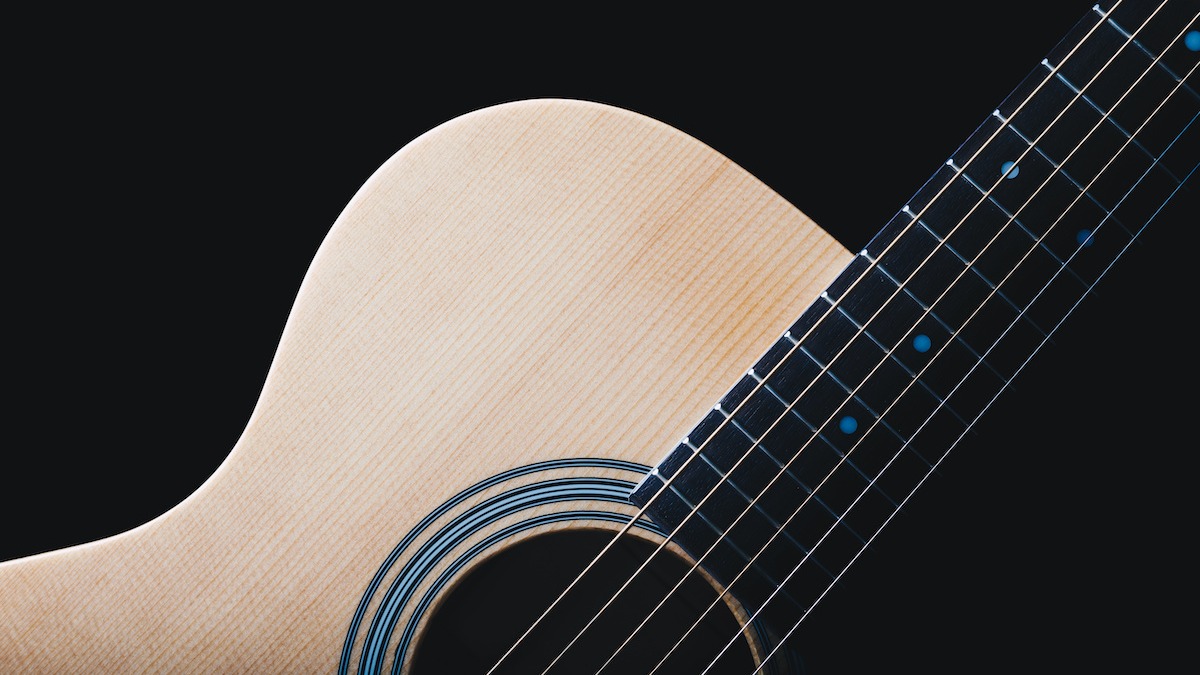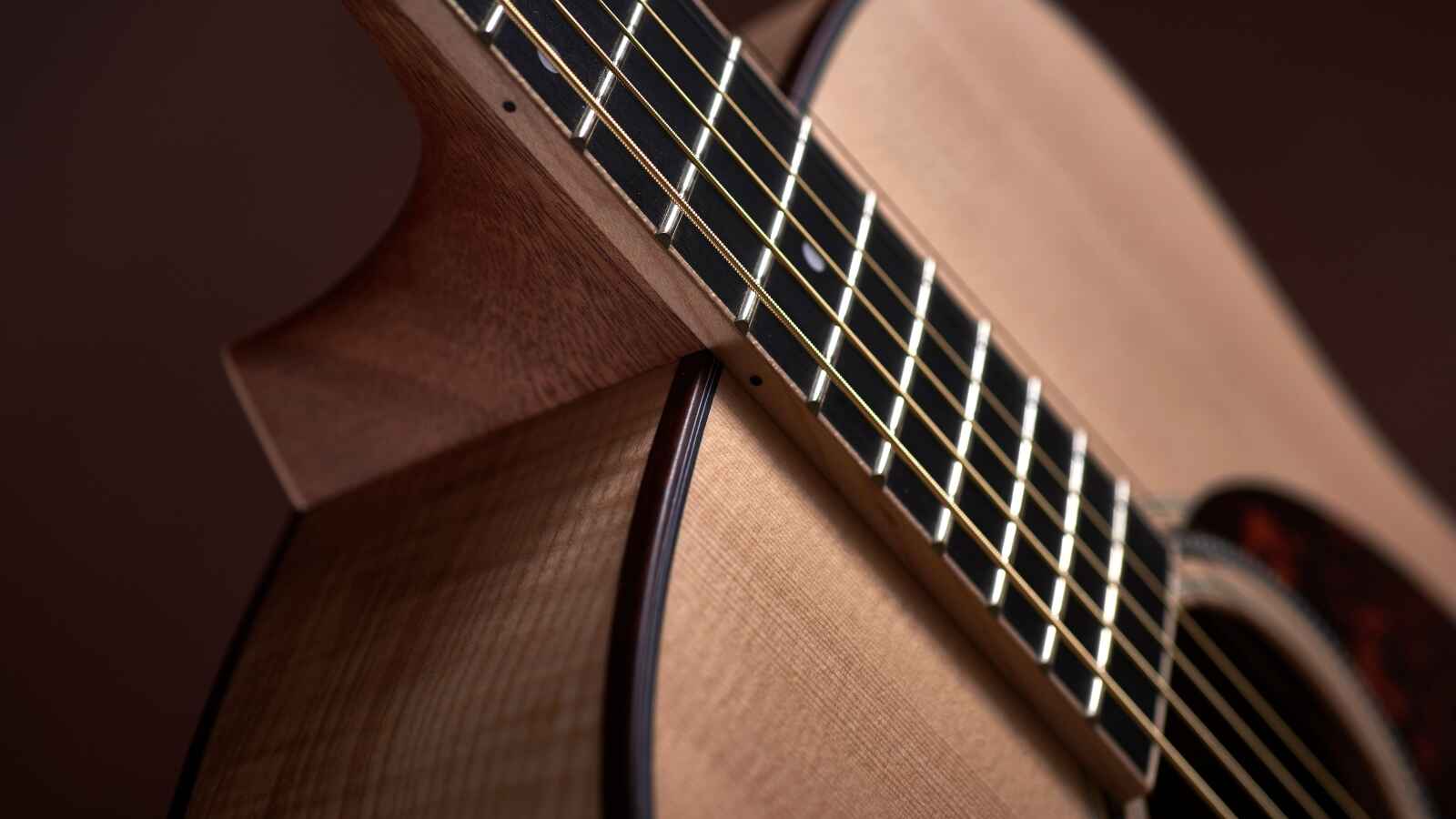Introduction
Welcome to the wonderful world of acoustic guitar strings! Whether you’re a seasoned guitarist or just starting out, understanding the length of your acoustic guitar strings is crucial for achieving optimum sound and playability. The length of the strings can significantly impact the tone, tension, and overall performance of your instrument.
Acoustic guitar strings are made up of different materials such as bronze, phosphor bronze, and steel. The length of the strings refers to the vibrating portion between the nut and the bridge of the guitar. This length determines the scale length of the instrument, which affects both the sound and the feel of playing.
Throughout this article, we’ll explore the anatomy of acoustic guitar strings and delve into the factors that affect their length. We’ll also discuss the common lengths of acoustic guitar strings and provide guidance on how to measure and choose the right length for your specific guitar.
Whether you’re looking to replace your old strings or simply curious about the science behind acoustic guitars, this guide will equip you with all the knowledge you need to make informed decisions about your instrument’s strings. So, let’s dive in and demystify the length of acoustic guitar strings!
Anatomy of an Acoustic Guitar String
Before we explore the length of acoustic guitar strings, it’s essential to understand their anatomy. An acoustic guitar string consists of three main parts:
- Core: The core of a guitar string is the central component that provides strength and stability. It can be either round or hexagonal in shape, depending on the manufacturer. The core plays a significant role in determining the string’s flexibility and responsiveness.
- Winding: The winding is a layer of metal wire that wraps around the core. It enhances the string’s durability and can affect its tone. Common winding materials include bronze, phosphor bronze, and steel.
- Ends: The ends of acoustic guitar strings are often referred to as the ball ends. These are usually made of brass or steel and are used to secure the strings to the bridge of the guitar.
The combination of the core, winding, and ends creates the vibrating length of the string, which is crucial for producing sound when the strings are plucked or strummed. The length of the vibrating portion significantly impacts the pitch, resonance, and overall tonal characteristics of the string.
It’s important to note that the length of the vibrating portion of a guitar string varies depending on the scale length of the guitar. The scale length refers to the distance between the nut and the bridge, usually measured from the edge of the nut to the center of the 12th fret and then doubled. Different guitar models and brands have varying scale lengths, resulting in differences in the length of the vibrating portion of the strings.
Now that we have a basic understanding of the anatomy of acoustic guitar strings, let’s explore how the length of these strings can affect the sound and playability of your instrument.
The Length of Acoustic Guitar Strings
The length of acoustic guitar strings refers to the vibrating portion between the nut and the bridge of the guitar. This length, also known as the scale length, plays a vital role in determining the pitch and overall sound of the strings.
When you pluck or strum a guitar string, it starts vibrating, creating sound waves. The length of the vibrating portion directly affects the frequency at which the string vibrates, thus determining its pitch. A shorter vibrating length produces higher pitches, while a longer length results in lower pitches.
It’s important to note that the scale length of your guitar determines the specific length of the vibrating portion of the strings. Different guitar models and brands have varying scale lengths, ranging from 24 inches to 25.5 inches or more. The scale length affects not only the length of the strings but also the tension and overall feel of playing.
Shorter scale length guitars generally have a warmer and less bright tone due to the reduced tension on the strings. These guitars are often preferred by players who enjoy a more relaxed playing experience or favor genres like blues or jazz.
On the other hand, guitars with longer scale lengths tend to have a brighter and more pronounced tone. The higher tension on the strings can provide increased sustain and overtone richness. They are commonly associated with genres like rock, country, and bluegrass.
Understanding the length of your acoustic guitar strings is crucial when it comes to achieving the desired tone and playability. Whether you prefer a shorter scale length for a mellower sound or a longer scale length for a brighter and punchier tone, selecting the right string length that matches your guitar and playing style is essential.
Now that we know the importance of the length of acoustic guitar strings, let’s explore the various factors that can affect the length and the considerations involved in choosing the right string length for your instrument.
Factors That Affect the Length of Acoustic Guitar Strings
While the scale length of your acoustic guitar determines the overall length of the strings, there are other factors that can affect the specific length and performance of the strings. These factors can influence the tension, tone, and playability of your instrument. Let’s take a look at some of the key factors:
- Gauge of the strings: The gauge refers to the thickness of the strings. Lighter gauge strings are thinner and have less tension, resulting in a shorter vibrating length. On the other hand, heavier gauge strings have more tension and require a longer vibrating length. This adjustment allows for proper intonation and optimal playability.
- String material: The type of material used in the construction of the strings can impact their length. Different materials have different densities and flexibility, leading to variations in the vibrating length. Phosphor bronze strings, for example, tend to have a longer vibrating length compared to steel strings, resulting in a warmer and richer tone.
- Bridge saddle placement: The placement of the bridge saddle can affect the overall length of the strings. Adjusting the position of the saddle can alter the length of the vibrating portion and, consequently, the intonation of the guitar. It is important to ensure that the saddle is correctly positioned to maintain proper intonation and a balanced sound across all frets.
- String height: The action or string height refers to the distance between the strings and the fretboard. Higher action can increase the effective length of the strings, while lower action shortens it. Finding the right balance in string height not only affects the playability but also impacts the overall length and tension of the strings.
- String stretching: As guitar strings are played and stretched over time, they can gradually increase in length. This stretching can slightly affect the tension and intonation of the strings when compared to their original length. Regularly tuning and restringing your guitar can help maintain the desired length and performance.
It’s important to keep these factors in mind as you select and maintain your acoustic guitar strings. Finding the right combination of string gauge, material, and adjustments to the bridge saddle and string height will help you achieve optimal playability, tonal characteristics, and intonation.
Now that we have explored the various factors affecting the length of acoustic guitar strings, let’s move on to the next section where we will discuss the common lengths of these strings.
Common Lengths of Acoustic Guitar Strings
Acoustic guitar strings come in a variety of lengths to accommodate different guitar models and preferences. While the scale length of your guitar determines the overall length of the strings, it’s important to be aware of the common lengths available in the market. Let’s explore some of the typical lengths:
- Short Scale Length: Guitars with a shorter scale length, typically around 24 inches, have shorter string lengths. These guitars are commonly used by younger players, those with smaller hands, or individuals who prefer a more compact instrument. Shorter scale lengths often result in a warmer and more mellow tone.
- Standard Scale Lengths: Most acoustic guitars have standard scale lengths, which typically range from 24.75 inches to 25.5 inches. These lengths are commonly used in dreadnought-style guitars, concert-sized guitars, and other popular acoustic models. They provide a balanced and versatile range of tones suitable for various musical genres.
- Long Scale Lengths: Guitars with a longer scale length, such as 26 inches or more, are often found in larger acoustic guitars or specialty models. The extended scale length allows for higher string tension, resulting in increased volume, sustain, and a brighter tone. These guitars are popular among fingerstyle players and those who require more projection and power.
It’s important to note that the specific lengths of the strings will vary depending on the manufacturer and the guitar model. It’s always recommended to consult the manufacturer’s specifications or consult with a knowledgeable guitar technician to determine the appropriate string length for your specific guitar.
Experimenting with different string lengths can offer unique tonal characteristics and playability. However, it’s important to ensure that the strings are within the safe range of tension for your guitar to avoid any potential damage or adverse effects on the instrument’s performance.
In the next section, we’ll learn how to measure the length of acoustic guitar strings to ensure the correct fit for your instrument.
How to Measure the Length of Acoustic Guitar Strings
Measuring the length of acoustic guitar strings is crucial for ensuring the proper fit and playability of your instrument. Here’s a simple step-by-step guide on how to measure the length of your guitar strings:
- Locate the Nut and Bridge: The nut is a small piece located at the end of the guitar neck, while the bridge is at the opposite end of the guitar body. Identify these two points as they will serve as reference points for measuring the string length.
- Mentally Divide the Strings: Mentally divide the strings into two equal sections: the vibrating portion and the non-vibrating portion. The vibrating portion is the part between the nut and the bridge, while the non-vibrating portion extends beyond the nut and bridge.
- Measure the Vibrating Portion: Using a ruler or measuring tape, measure the length of the vibrating portion of the string. Start from the edge of the nut towards the center of the 12th fret, and then double that measurement. This will give you the length of the vibrating portion.
- Measure the Non-Vibrating Portion: To determine the length of the non-vibrating portion, measure from the center of the 12th fret to the point where the string contacts the bridge. Again, double this measurement to get the length of the non-vibrating portion.
- Add Both Portions: Add the length of the vibrating portion and the non-vibrating portion together to get the total string length. This measurement will help you select the appropriate string length for your guitar.
It’s worth noting that when purchasing new strings, the package will typically specify the scale length and string gauge recommendations. These recommendations can be helpful in selecting the correct set of strings for your guitar.
If you’re unsure about the measurements or need assistance, it’s always a good idea to seek guidance from a guitar technician. They will have the expertise to measure your guitar accurately and recommend the suitable string length.
Now that you know how to measure the length of your acoustic guitar strings, let’s move on to the final section where we will discuss some considerations when choosing the right length for your guitar.
Choosing the Right Length for Your Acoustic Guitar Strings
When it comes to choosing the right length for your acoustic guitar strings, there are a few considerations to keep in mind. These factors will help you select the optimal string length that enhances the playability, tone, and overall performance of your instrument. Here are some key points to consider:
- Guitar Scale Length: The scale length of your guitar is the most critical factor in determining the appropriate string length. Different guitars have different scale lengths, which will dictate the length of the vibrating portion of the strings. Ensure that you choose strings that are designed for your specific guitar scale length.
- Playing Style and Genre: Consider your playing style and the genre of music you primarily play. If you play primarily fingerstyle or require more volume and projection, a longer scale length with higher tension strings might be suitable. On the other hand, if you prefer a more relaxed playing experience or play genres that require a warmer tone, a shorter scale length with lighter gauge strings may be more appropriate.
- Personal Preference: Ultimately, your personal preference plays a significant role in choosing the right string length. Experiment with different lengths and gauges to find the combination that feels comfortable and produces the desired sound for you. Remember that everyone’s preferences may vary, so trust your instincts and select the option that feels best to you.
- Consultation with Professionals: If you’re uncertain about which string length to choose, don’t hesitate to seek advice from guitar technicians or experienced players. They can offer valuable insights and recommendations based on their expertise and experience.
- String Tension: It’s important to consider the tension of the strings when selecting the appropriate length. Higher tension strings will require a longer vibrating length, while lower tension strings will work better with shorter lengths. Finding the right tension for your playing style and guitar model is crucial for optimal playability.
Keep in mind that the length of your acoustic guitar strings can have a significant impact on the playability and tone of your instrument. Take the time to experiment with different lengths and gauges to find the combination that best suits your playing style and preferences.
By considering factors such as your guitar’s scale length, playing style, genre, personal preference, and seeking advice when needed, you’ll be able to choose the right string length that enhances your playing experience and allows you to achieve the desired sound.
Now that we’ve explored the factors to consider when choosing the right length for your acoustic guitar strings, let’s wrap up this article on the fascinating topic of acoustic guitar strings.
Conclusion
Understanding the length of acoustic guitar strings is essential for every guitarist. It not only affects the pitch and tone of the instrument but also influences playability and overall performance. By familiarizing yourself with the anatomy of guitar strings, the factors that affect their length, and the process of measuring and choosing the right length, you can optimize your guitar’s sound and enjoy a more satisfying playing experience.
Keep in mind that the scale length of your guitar determines the overall length of the strings, and different guitar models and brands have varying scale lengths. It’s important to select strings that are specifically designed for your guitar’s scale length to ensure the best fit and intonation.
Consider factors such as your playing style, genre of music, personal preference, and the advice of professionals when choosing the appropriate length for your acoustic guitar strings. Experimentation and exploration are key to finding the optimal string length that suits your unique needs and desired sound.
Remember, the length of acoustic guitar strings is just one element that contributes to the overall sound and playability of your instrument. Coupled with other factors like string gauge, material, and adjustments to the bridge and string height, you can fine-tune your guitar to achieve the perfect balance and express your musical style.
So, dive into the fascinating world of acoustic guitar strings, explore the various lengths, and unleash your creativity and musicality. With the right string length and a little practice, you’ll be well on your way to unlocking the full potential of your acoustic guitar.

























